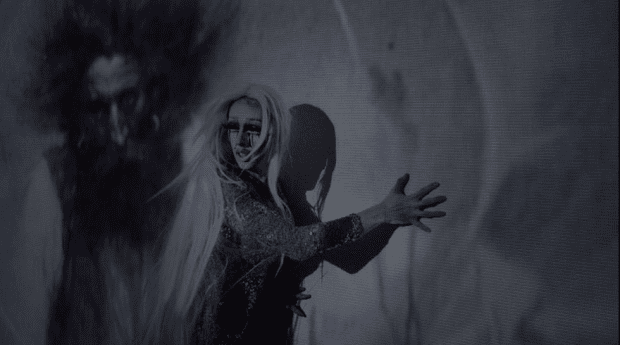Blend one part Susan Sontag, one part Elisabeth Kübler-Ross and add a healthy dose of queer witchcraft. Bake at minus 40 degrees for three years and voilà: Phantome Aesthetique – Notes from Funeral Camp. Conceived in part during Andrew Harwood’s MFA studies in Winnipeg, the artist’s current show for Paul Petro blends an unlikely collection of influences in the creation of a series of glittery photographs, monoprints and videos. Daily Xtra talked with the quirky creator about death, mourning and bringing sex to your spiritual practice.
Xtra: What was the inspiration for this series of works?
Andrew Harwood: My mother had been ill for some time, and I was in therapy. I realized I was in anticipatory grief for her death. I started to read Kübler-Ross and Sontag and realized one could be both happy and sad for the loss of a loved one. When she died, I created my own spiritual rituals to mourn her death. This exhibition is partly a temporary monument to her.
I understand the occult is a major theme in the show.
I don’t use the term occult anymore since it implies Christianity is the only true cult. Queer people have been secretly practising other spiritual beliefs for eons, as many of us don’t fit into Christianity’s tenants. We’ve also been murdered in droves by Christians seeking to purify the world and save souls. I should say that this exhibition isn’t about trying to convert people to my spiritual belief system. I think that’s ethically wrong. It’s more about the theatricality of the spiritual experience, a very Sontag idea.
What’s the connection between witchcraft and queer sexuality in your mind?
I’m totally down with pleasure-based spiritual practices! Christianity in the West is about the denial of the body, its pleasures and the connections to sex, which is at odds with the human experience. Witchcraft, on the other hand, has many sexually based activities that function as a form of worship, so it aligns much better with queer identity. In many ways, I also identify with the culture of suffering in the history of witchcraft. So many people, especially women, died for retaining knowledge that was outside of the mainstream, the same way queers have been persecuted historically. And I’ve certainly been called a witch on occasion in my career!
Phantome Aesthetique – Notes from Funeral Camp
Runs until Sat, Feb 14
Paul Petro Contemporary Art, 980 Queen St W


 Why you can trust Xtra
Why you can trust Xtra


